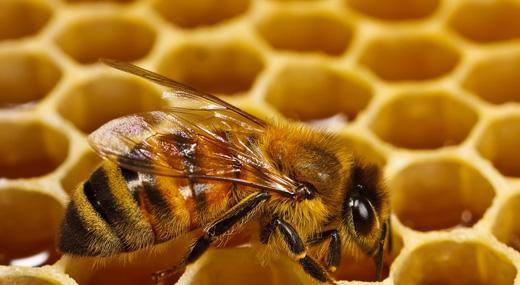Dragonflies

Of all the flying insects, dragonflies just might be the most charming. They don’t sting or bite. They don’t carry diseases or germs. And they have bright colors and an amazing way of flying. Dragonflies live in most parts of the world, but they prefer to live near ponds or streams. Dragonflies and their smaller cousins, damselflies, spend most of their life as larva, or baby dragonflies. They hatch from eggs under water and feed on water insects, tiny fish and even tadpoles. They can stay in the larval stage for up to two years, depending on the species. Then they leave the water and come ashore. Their hard exoskeleton cracks and their abdomen, or bottom part, expands. Their wings harden and they become adults. Unfortunately, most adult dragonflies live only a few weeks.
HoneyBees

Honeybees are flying insects, and close relatives of wasps and ants. They are found on every continent on earth, except for Antarctica. Bees of all varieties live on nectar and pollen. Without bees, pollination would be difficult and time consuming - it is estimated that one-third of the human food supply depends on insect pollination. Bees have a long, straw-like tongue called a probiscus that allows them to drink the nectar from deep within blossoms. Bees are also equipped with two wings, two antennae, and three segmented body parts (the head, the thorax, and the abdomen). Honeybees are social insects that live in colonies. The hive population consists of a single queen, a few hundred drones, and thousands of worker bees. Worker bees are the most familiar-looking member of the honeybee hive, as they make up about 99% of each colony's population. Worker bees are all female, and they do almost everything for the hive. From birth to her death 45 days later, the worker bee is given different tasks to do during different stages of her life. Worker bees are responsible for everything from feeding the larvae (the baby bees), to tending to the queen, to cleaning the hive, to collecting food, to guarding the colony, to building honeycomb.
Spiders

There are many animals on the planet that are truly scary, but spiders aren’t one of them. In fact, spiders do much more good than harm. Most people are afraid of spiders because they bite. But only two kinds of spiders in the U.S. – the black widow and the brown recluse – are venomous to people. In the whole world, only 25 species of spiders can harm humans, out of over 37,000 species. So what’s so great about spiders? First, they eat insects – and lots of them. One spider can eat over 2,000 insects a year. Without them, your home and garden would be overrun with flies, mosquitoes and beetles. Spiders also have several fancy tricks that make them different than any other animal.
Interesting Facts for Insects
Click the button to search the text INTERESTING FACTS ABOUT INSECTS and see if bees are mentioned.
Click the button to call the new myMet() method,
and display this month's name, using the new myProp property.